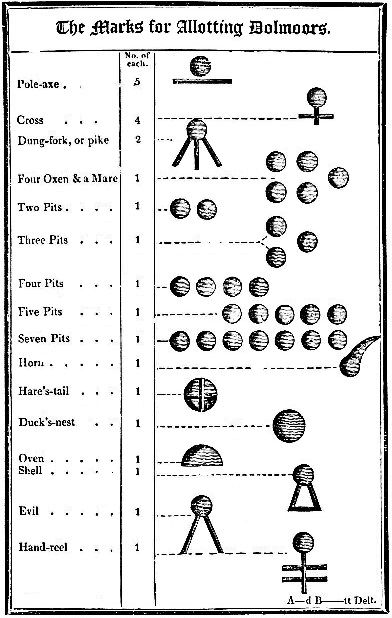“The Old White Horse wants setting to rights,
And the Squire has promised good cheer;
So we’ll give him a scrape to keep him in shape,
And he’ll last for many a year.”
The White horse of Uffington is a considerable enigma. Thought to be over a couple of millennia old, but how such a fragile monument could survive the centuries is perhaps confusing. The simple answer is by ritual stripping or scouring of the horse. The first reference to regular cleansing of the horse to keep its shape occurs in the 17th century when we are told that inhabitants of local villages had an obligation:
“to repair and cleanse this landmark, or else in time it may turn green like the rest of the hill and be forgotten”.
Thomas Cox’s ‘Britannia’ of 1720, recorded the stripping of this horse of weeds was done each Midsummer and it became a great celebration with feasts and frolics. He notes:
“the neighbouring parish have a custom, once a year, at or near Midsummer, to go and weed it in order to keep the Horse in shape and colour, and after the work is over they end the day in feasting and merriment”.
The ceremony was probably religious in nature to begin with but by the 18th century, revelry had taken over. In Thomas Hughes’ ‘The Scouring of the White Horse’ he describes this celebration as country fair. The fair was attended by acrobats, musicians and a skittle alley. There were flower-bedecked booths and stalls which sold a wide range of odd items from gingerbread, to toys, nuts to ribbons, knives to braces and straps. Alcohol was freely available of course which added to the frivolity. During the day competitions were run such as cudgel fighting, climbing a greasy pole, sack racing. As well as strange activities such as finding the silver bullet in the flour and even a pipe-smoking marathon with prizes ranging from a gold-laced hat to half-a-guinea or a gallon of gin. All this entertainment obviously would cause problems and as such a huge white tent was set up to house the county police. An eighty-four-year-old man called William Ayres of Uffington, tells of this events, stating of the horse racing:
“Well now, there wur Varmer Mifflin’s mare run for and won a new cart saddle and thill-tugs — the mare’s name wur Duke. As many as a dozen or moor horses run, and they started from Idle’s Bush, which wur a vine owld tharnin’-tree in thay days —a very nice bush. They started from Idle’s Bush, as I tell ‘ee, Sir, and raced up to the Rudge-waay; and Varmer Mifflin’s mare had it all one way, and beat all the t’other on ‘urn holler. The pastime then wur a good ‘un — a wunderful sight o’ volk of all sorts, rich and poor. . . . “
Other events are described:
“There wur running for a peg too, and they as could ketch ‘un and hang ‘un up by the tayl, had ‘un. The girls, too, run races for smocks — a deal of pastime, to be sure, Sir. There wur climmin’ a grasy pole for a leg of mutton, too; and backsoordin’, and wrastlin’, and all that, ye knows, Sir.”
Baskerville claimed it was an ‘obligation’ but the festival or ‘pastime’ was probably the chief incentive. In 1738, Wise said that the games and merrymaking had lost their ‘ancient splendour’ and, by the end of the 18th century, the festivities had become a mere profit making enterprise with many regular stalls and fee-paying contests. Something of its grandeur was, however, popularly revived in Victorian times.

A midsummer Solstice festival
“Another geaam wur to bowl a cheese down the Mainger, and the first as could catch ‘un had ‘un. The cheese was a tough ‘un and held together.”
Early references suggest the midsummer solstice as the original festive season at Uffington. Certainly the rolling of cheeses is significant, folklorists have often draw a connection between this sport and the turning of the year, the cheese representing the sun and thought to boost its power! Hughes also describes the practice of chasing after a wheel rolled down the manager and Jackson’s Oxford Journal in 1780 notes that a horse’s jawbone was used to ride down!
The stripping away of tradition
Unlike many customs which decline and finally disappear, the festivities were stopped in 1857 when 30,000 rowdy people turned up offending the Victorian sensibilities of the day. After the First World War, the horse became rather overgrown and by 1922 it had almost been overgrown and in the Second World War it purposely covered over. The cleaning of the horse being taken over by the National Trust who own the land, except in a nod to the old ceremony, some several hundred people climbed the hill one bank holiday to help re-chalk the horse. The date was of course difference and the partying absent but it was good to see the Trust recognise the importance of the figure to its community.
